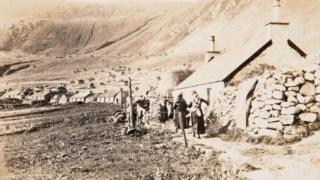
University of Glasgow
The last residents were evacuated from the island 90 years ago
Early on the morning of 29 August 1930, the last 36 residents began the evacuation from St Kilda, a group of islands 110 miles off the west coast of Scotland that had been lived on for thousands of years.
Three hours later, 13 men, 10 women and 13 children were aboard the ship that would take them away from their homes forever.
They left because they were concerned they would not last another winter on the barren North Atlantic archipelago, which was virtually cut off from the mainland for nine months of the year by rough seas and winds.
For the 90th anniversary, author Liz Gifford has pieced together the stories of those who lived in each of the 16 cottages along the village street on Hirta. The largest of the islands, it was the only one that was still inhabited in 1930.
By the time of the evacuation there were only five surnames left in St Kilda, and two-thirds of the population were called either MacKinnon or Gillies.
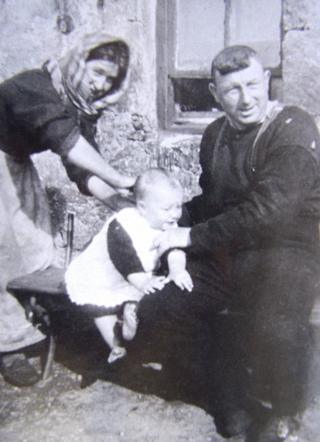
NAtional Trust for Scotland
Mary Gillies with her husband John and son Norman John
Five-year-old Norman John Gillies lived at number 10 with his father John.
His mother Mary had died three months earlier of complications after giving birth to a daughter, who also died.
Mary developed appendicitis while on the island but, even though it was winter, a fishery cruiser was able to reach St Kilda and take her to the mainland.
She was in Stobhill Hospital in Glasgow for three months, and was even hoping to return to her family, when things suddenly took a turn for the worse.
Young Norman John, who died in Suffolk at the age of 88, always retained clear memories of waving his mother goodbye from the shore for the last time.
Ms Gifford says Mary’s death finally broke the islanders’ resolve to stay on St Kilda.
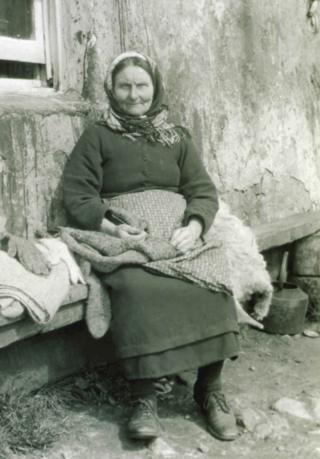
NAtional Trust for Scotland
Anne Gillies, whose eldest daughter Mary died from TB just before the evacuation
Another death, just a month before the evacuation, compounded the feelings of the islanders.
Mary – the eldest daughter of Anne Gillies, who lived at number 14 – died from TB.
Nurse Barclay, who was stationed on the island to monitor the health of the residents, had flagged down a passing trawler by waving sheets.
But by the time help arrived, Mary was too ill to be saved.
Nurse Barclay was instrumental in petitioning the government to help with the evacuation of the island and the resettlement of its residents.
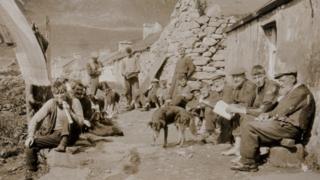
NAtional Trust for Scotland
The men of the island – including Neil Ferguson, third from the left – meet for the St Kilda Parliament
The only person who opposed the evacuation was Neil Ferguson, who lived at number 5.
Ms Gifford says he was the only one to dig his croft ready for planting for a summer harvest, and was the last to leave his house, delaying for as long as he could the boat that would take them away.
Over the years the St Kildans had come into contact with summer tourists and the outside world, and had begun to rely more on imports of food, fuel and building materials.
Many young islanders had emigrated in the preceding decades as they saw there might be more opportunities in places such as Australia and Canada.
Traditionally one of the main sources of food was the hundreds of thousands of seabirds that nested on the high cliffs.
The men would go down on ropes to hunt fulmars and guillemots and collect the eggs.
“They had a very specific hunter-gatherer lifestyle that was almost prehistoric really,” says Ms Gifford.
“By the time the evacuation came along there weren’t enough able-bodied men left on the island to do the work.”
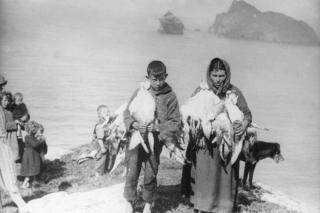
NAtional Trust for Scotland
Anne MacKinnon and son Finlay, one of her eight children, help with the fulmar harvest
For many people, life on St Kilda had become untenable.
Anne and Norman MacKinnon lived at number 1 with their eight children.
During the last winter on the island, the MacKinnon family came close to starving.
Norman was one of the first to say that he wanted to leave when Nurse Barclay suggested that the St Kildans would not be able to last another winter.
The family were resettled in Larachbeg in Morvern, but by 1936 four of the children had died from TB. The family were rehoused in the Black Isle, where they planted trees for the forestry.
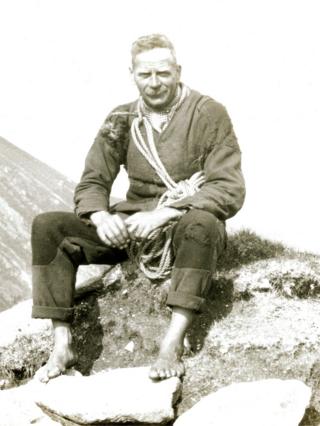
NAtional Trust for Scotland
Ewen MacDonald, from number 16, lived in Glasgow but returned to help capture the seabirds in the summer
Despite there being no trees on St Kilda, quite a few of the men from the island ended up working in forestry.
They included Lachlan MacDonald, who lived at number 16. He had wanted to follow his brother Ewen to Glasgow, but could not leave their 67-year-old mother who was often in great pain from arthritis.
He worked a punishing schedule to keep up with the work needed to support so many elderly people, weaving late into the night then rising in the morning to begin the crofting work, or going down on the cliffs to hunt birds in summer.
So many islanders had left that the traditional livelihoods of raising sheep for wool, spinning and weaving tweed, fishing and harvesting of seabird eggs and oil, were much harder to sustain.
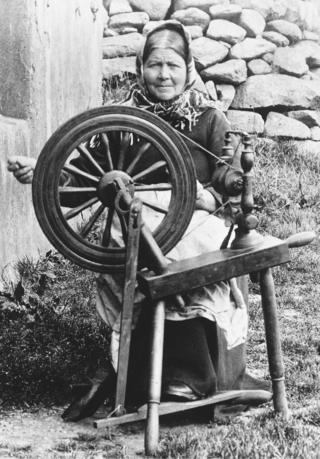
NAtional Trust for Scotland
Widow Kirsty MacQueen, who lived at number 11, demonstrating spinning for tourists
Two of the older generation at the time of the evacuation were Finlay MacQueen, at number 2, and his sister Anne, who lived at 15.
Finlay spoke little English and like most of the elderly St Kildans, he found it hard to adjust to life on the mainland after evacuation.
He managed to return to St Kilda for the summer a few times, as did his sister Anne, who was known as the Queen of St Kilda.
She had been widowed in 1926 when her husband Donald and three other St Kildans died from a bout of influenza that swept through the village.
Two of her sons lived on the island at the time of the evacuation – John at number 10 and Donald John at Number 13. Another son, Neil, had already left the island for Glasgow.
Ms Gifford, who has written the booklet The Last Families on St Kilda, said she had wanted to match the names of the last residents to photos and the places where they lived.
“I think you really need to know them cottage by cottage to understand what their life was like,” she added.
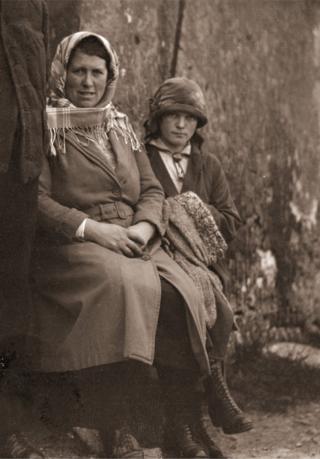
NAtional Trust for Scotland
Housekeeper widow Anne Gillies, 36, and her 16-year-old daughter Mary Anne lived at number 9 with John MacDonald
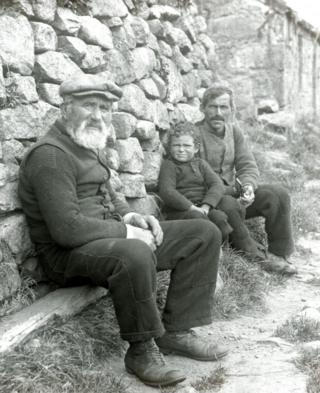
NAtional Trust for Scotland
Finlay Gillies, the oldest resident on St Kilda at 74, with his son and grandson
.
